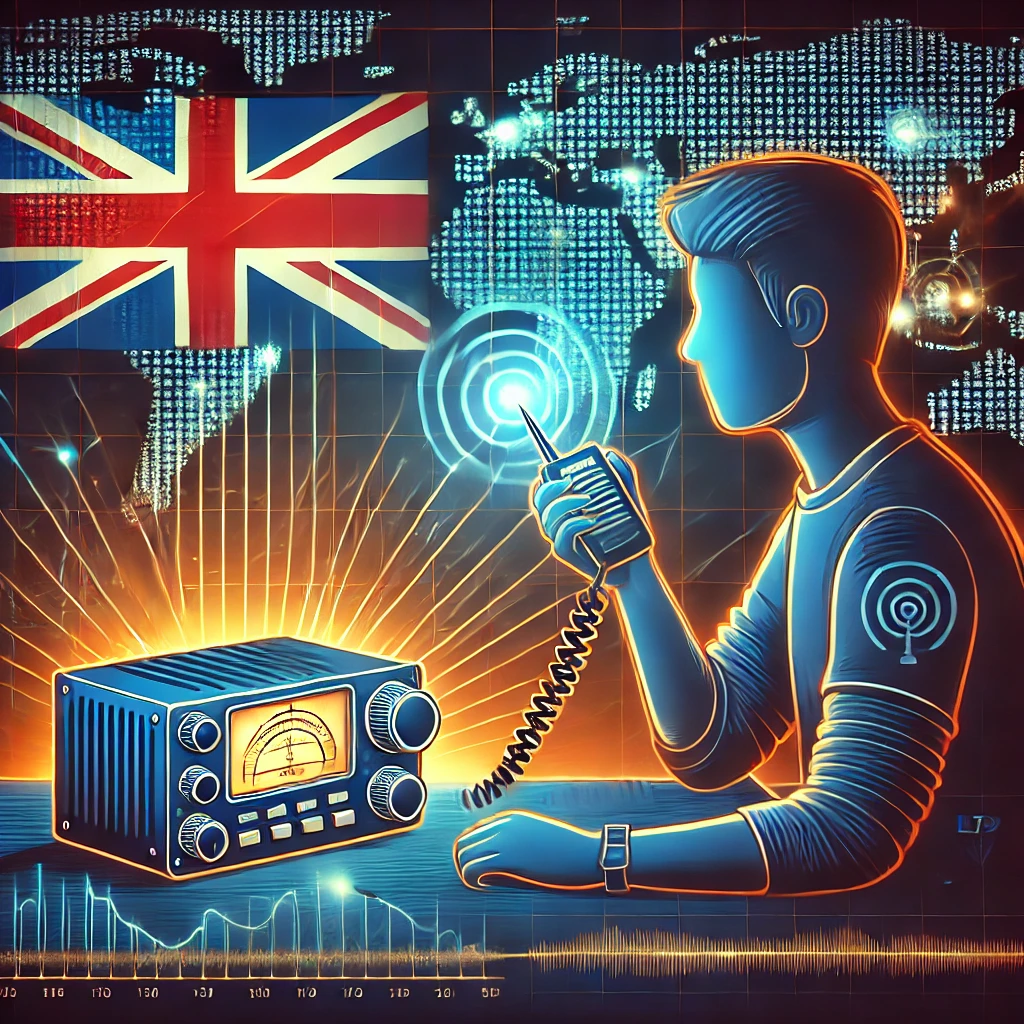Beginner’s Guide to Armature Radio in the UK

Embarking on the journey of amateur radio in the UK is both exciting and rewarding. This guide will walk you through the essential steps to get started, from understanding the basics to obtaining your license and making your first transmission.
1. Understanding Amateur Radio
Amateur radio, often referred to as “ham radio,” is a hobby that allows individuals to communicate over designated radio frequencies for personal, non-commercial purposes. Enthusiasts, known as “radio amateurs” or “hams,” engage in various activities, including:
- Communication: Connecting with others locally and globally.
- Experimentation: Exploring electronics and radio technology.
- Public Service: Assisting in emergency communications during disasters.
To transmit on amateur radio frequencies in the UK, you must hold a valid license issued by Ofcom, the UK’s communications regulator.
2. Licensing Levels in the UK
The UK offers a structured licensing system with three tiers:
- Foundation License: Entry-level license granting access to various frequency bands with a maximum power limit of 20 watts.
- Intermediate License: Offers increased privileges, including higher power limits up to 100 watts and access to additional bands.
- Full License: Provides complete access to all amateur bands with maximum legal power and the ability to operate abroad.
Each level requires passing an examination that tests your knowledge of radio theory, operating practices, and regulations.
3. Preparing for the Foundation License
The Foundation License is your gateway into amateur radio. Here’s how to prepare:
- Study Materials: Utilize resources like the “Foundation Licence Manual” available from the Radio Society of Great Britain (RSGB).
- Online Courses: Enroll in free online training courses, such as those offered by Essex Ham, which provide structured lessons and practice exams.
- Local Clubs: Join a local amateur radio club for hands-on experience and mentorship. Clubs often offer training sessions and can provide practical insights.
4. Taking the Foundation Exam
The Foundation exam consists of multiple-choice questions covering:
- Basic electronics and radio theory.
- Operating procedures and practices.
- Safety considerations.
- Regulatory requirements.
Exams can be taken online or at designated test centers.
5. Obtaining Your License and Callsign
Upon passing the exam, you’ll receive a certificate from the RSGB. To obtain your license and unique callsign:
- Register with Ofcom’s online licensing system.
- Apply for your Foundation License and select an available callsign.
This process is typically straightforward, and once completed, you’ll be authorized to operate on the allocated amateur radio frequencies.
6. Setting Up Your First Station
With your license in hand, it’s time to set up your station:
- Equipment: Start with a simple transceiver compatible with the bands permitted under your license.
- Antenna: Install an appropriate antenna, considering factors like space, budget, and the frequencies you plan to use.
- Safety: Ensure all equipment is set up safely, adhering to electrical safety standards and considering electromagnetic compatibility (EMC) to avoid interference.
For detailed guidance on setting up your first station, refer to Essex Ham’s resources.
7. Making Your First Contact
Begin by listening to ongoing communications to familiarize yourself with protocols. When ready:
- Choose a Frequency: Select an appropriate frequency within the bands you’re licensed to use.
- Call CQ: Announce your callsign and invite others to respond.
- Log Contacts: Keep a record of your communications, noting details like date, time, frequency, and correspondent’s callsign.
8. Joining the Amateur Radio Community
Engage with the broader community to enhance your experience:
- RSGB Membership: Consider joining the Radio Society of Great Britain for access to resources, publications, and events.
- Local Clubs: Participate in local club meetings, workshops, and social events.
- Online Forums: Join online communities and forums to exchange knowledge and experiences with other amateurs.
By following these steps, you’ll embark on a fulfilling journey into the world of amateur radio, connecting with a global community and exploring the vast possibilities this hobby offers.
For a comprehensive visual introduction, consider watching the following video:

